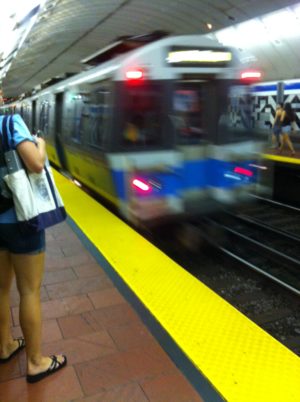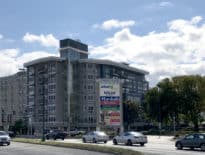The rising cost of MBTA pensions has board members concerned about the long-term stability of the retirement program for an agency where ridership over the first three months of the budget year dipped nearly 2 percent. The only rapid transit line to buck the trend was the Blue Line, which saw ridership grow by nearly 20 percent.
The MBTA’s Fiscal and Management Control Board received updates Monday on the budget and ridership through September, covering the first quarter of the fiscal year that began on July 1. Overall, subway ridership was down 1.6 percent in September over last year, and bus ridership was off 1.8 percent.
Meanwhile, the MBTA’s revenues were $3.2 million below budget for the fiscal year through September, while the agency had spent about $2.2 million less than what had been budgeted, helping to blunt the overall impact.
Fare, parking and advertising revenues were nearly $10 million under budget for the first quarter, but officials told the board they expected that to trend back toward budgeted levels with parking revenues projected to grow after rates increased on Sept. 1. Fare revenues are also expected to get a boost from the relaunch of Corporate Perq Pass.
One of the major risks to keeping the fiscal 2019 budget on track, however, could be pension costs.
The $97 million budgeted for MBTA pensions grew to $103 million after the state’s pension board revised its assumed rate of investment return from 7.75 percent to 7.5 percent after the fiscal 2019 budget had been adopted. That could grow further if sufficient returns are not realized, officials said.
Based on actuarial projections, the cost of pensions could shrink to $93 million or grow to $137 million by 2022 depending on how the pension fund performs.
“If you look at the trend line, it’s entirely unsustainable,” said FMCB board member Brian Shortsleeve, who estimated that the cost of pensions to the MBTA had climbed 50 percent since the board started its work in 2015. “This is a critical issue we’ve got to address.”
Board member Brian Lang agreed, but said he has seen examples of other pension systems using “creative measures” to preserve the benefit for employees without bankrupting the agency. “I think it can be done,” Lang said.
Transportation Secretary Stephanie Pollack said she was alarmed by the fact that pension costs account for 23 percent of payroll expenses.
“That really is not sustainable,” she said.
Overall for the year, however, the MBTA’s budget was only $900,000 off target. Shortsleeve urged MBTA General Manager Luis Ramirez not to lose sight of the agency’s target of roughly $30 million in savings through efficiencies and enhance productivity.
“If we live in a world where revenue is going to be declining, we need to be relentless on that cost curve,” Shortsleeve said.
Shortsleeve asked whether the decline in revenues tracked with the drop in ridership, but MBTA staff said that it was not a direct correlation because of unaccounted for commuter rail revenues.
While subway and bus ridership was down, ridership on ferries over the last 12 months was up 2.9 percent. And the Blue Line saw the biggest growth in ridership on the core subway system, with peak ridership up 18.1 percent from January 2014, while the Red Line saw a 0.6 percent decline and the Orange Line experienced a 2.4 percent drop over the nearly five year span.
Bus ridership since 2014 was also down 7.9 percent, but MBTA officials stressed that ridership trends were in line nationally with other peer transit systems.
Other threats to the MBTA’s budget this year, according to officials, were prolonged inclement weather, fluctuating energy costs, commuter rail insfrastructure costs and unrealized gains from The Ride, a door-to-door paratransit service. The RIDE has been going through a transition to a new centralized call center with a new operator, Transdev, after service degraded under the previous scheduling and dispatching vendor.
One-way passenger trips in October climbed back to 2016 levels of 156,000, according to officials, with another 15,000 people accessing RIDE services through an Uber/Lyft pilot program. On-time performance and other metrics also continue to improve, officials said.




 |
| 




